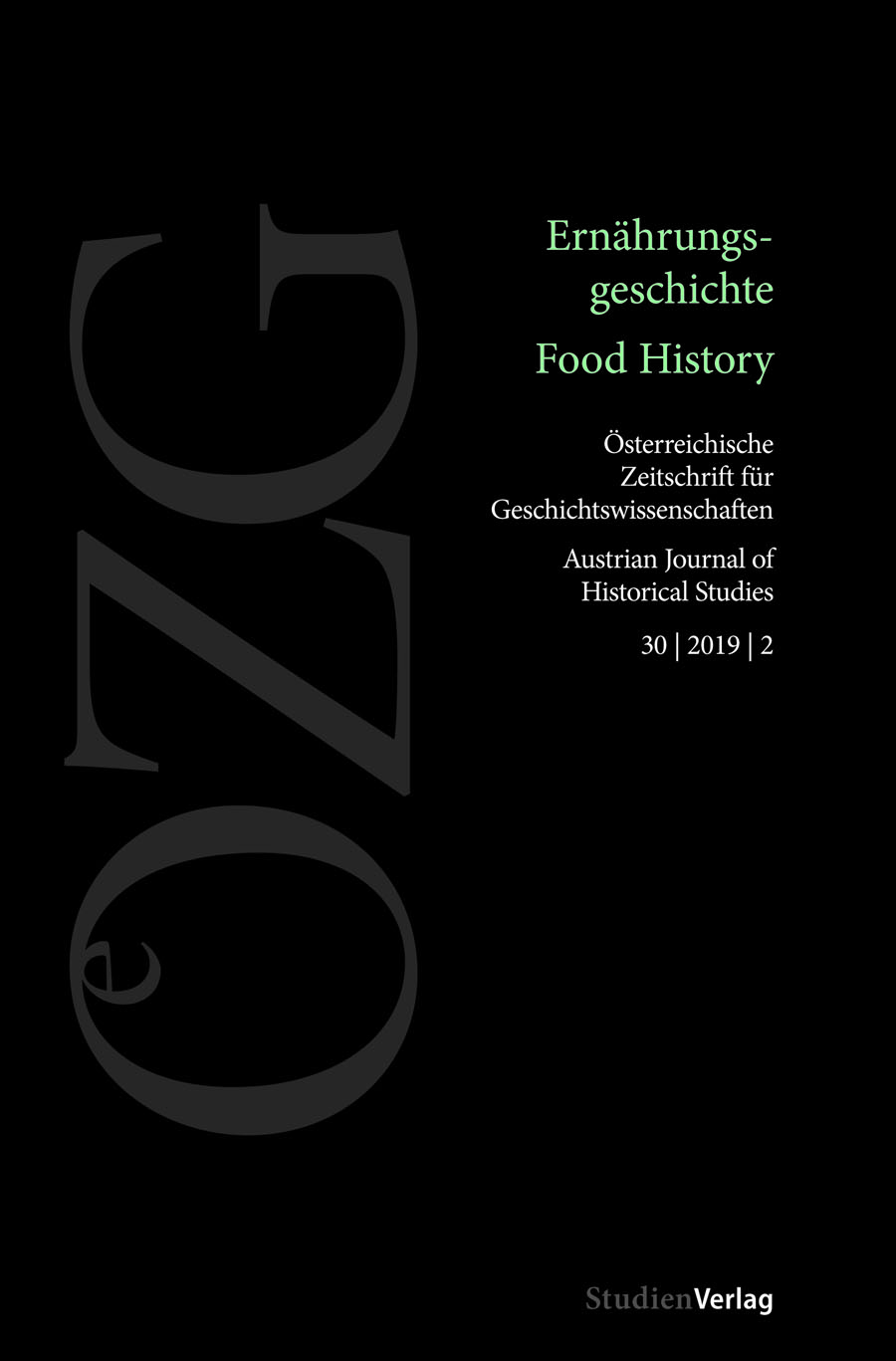Spitäler und Ernährungssicherheit (food security) in Spätmittelalter und Früher Neuzeit
Eine exemplarische Untersuchung zu kommunalen Fürsorgeinstitutionen im heutigen Niederösterreich
DOI:
https://doi.org/10.25365/oezg-2019-30-2-3Schlagworte:
hospital, poor relief, welfare institution, food security, food insecurity, nutrition, Late Middle Ages, Early Modern Period, Lower AustriaAbstract
Providing shelter, spiritual support, and food were among the most important functions of medieval and early modern hospitals. To date, historical and ethnological research dealing with the food situation in welfare institutions have mainly focussed on consumption aspects, but without considering the different parts of the food chain. This paper suggests a new perspective by applying the concept of food (in-)security to pre-modern hospitals. This concept, originally used in the context of developing countries, has meanwhile been adopted for developed countries, and for historical research specifically. Using the four dimensions of food security outlined by the Food and Agriculture Organisation of the United Nations as analytical categories, this paper analyses the (1) access to different forms of food support provided by hospitals, the (2) availability and (3) utilization of food as well as the (4) stability of these three categories. This analysis is based on case studies of municipal hospitals in the territory of present-day Lower Austria and focuses es- pecially on the second half of the 16th century.
Downloads
Veröffentlicht
Zitationsvorschlag
Ausgabe
Rubrik
Lizenz
Copyright (c) 2019 Sarah Pichlkastner

Dieses Werk steht unter der Lizenz Creative Commons Namensnennung 4.0 International.


